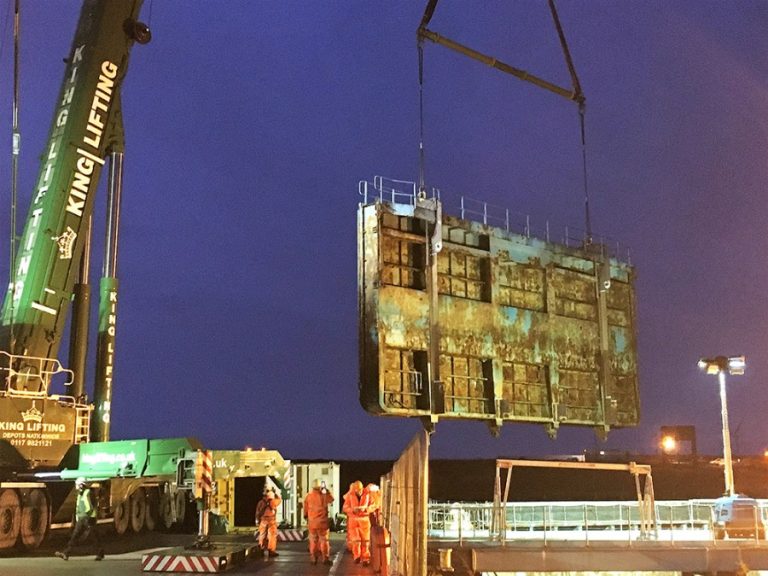A temporary works project led by HBPW has signalled the start of a £600k makeover of historic Blyth Docks in the North East, the place where the world’s first modern-style aircraft carrier, HMS Ark Royal, was built in 1914.
As part of the wider site refurb temporary works were required to facilitate the safe removal, repair and reinstallation of a 20m wide x 9m high fabricated steel plate dock gate located at the entrance to dock gate three.
Engineer Ross Hardy takes up the story. “AMCO invited us to the table as they were tendering for the works on behalf of leading offshore renewables technology and innovation centre, the Offshore Renewable Energy (ORE) Catapult, who occupy the docks site.
“The 70-tonne dry dock gate which needed to be removed and in place since the 1980’s, supported a full head of tidal water from the Blyth Estuary and had not been operated in many years. Unusually its opening mechanism comprised of four pivots at the base which enabled the gate to rotate from its vertical position to a fully submerged horizontal position on the dock bed
“The solution involved the replacement of each of the pivot pins with smaller diameter pins that could then be easily extracted on the day of the gate removal. Our temporary works were required to support the gate laterally against the hydrostatic water pressure during the pin replacement process.
“The temporary steelwork also remained submerged in the dock during the refurbishment to act as a guide in ensuring that the gate was precisely re-installed to its original position.”
Removing the dry-dock gate from its home of more than 30 years required a 750-tonne crane, with local consultant Fairhurst working alongside contractors KGAL and AMCO to complete its refurbishment.

The 70-tonne dock gate lift
“It was a big task requiring a lot of precise thinking,” added Ross, “however, despite some initial challenges the dock gate refurb has been successfully completed, paving the way for the rest of the project to steam ahead.”
Over the past five years, the docks have been the testing ground for some of the very latest next-generation technologies being developed for the offshore renewables sector – from innovative cable laying techniques to trenchers and remotely-operated vehicles (ROVs).
This investment, beginning with the refurbishment of the gate, will help maintain the docks’ legacy of ground-breaking innovation, putting the site at the heart of the renewables energy revolution and enabling ORE Catapult to maximise the use of its saltwater testing environment to support businesses and bring new products to market. Future technologies to be tested there will include robotic underwater inspection vehicles and new anti-corrosive materials for wind turbine foundations.
ORE Catapult’s David Hailes, who is managing the wider project, said: “The history of the harbour is a source of great pride for everyone working here and it’s a constant source of inspiration to hear some of the stories from its past. This extensive refurbishment will mean we can continue to be at the forefront of innovation for years to come.”
